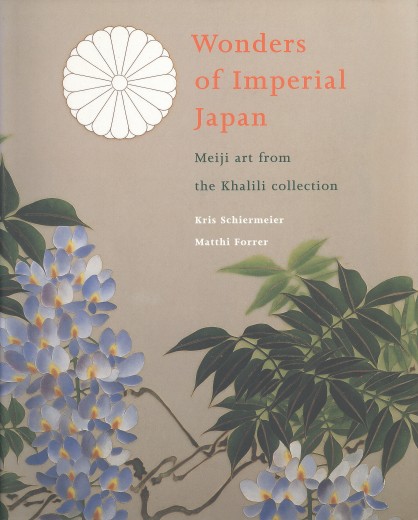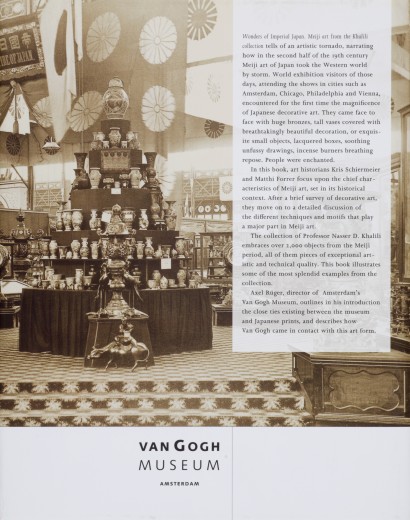


Wonders of Imperial Japan: Meiji art from the Khalili Collection presented a selection of over 200 major items from the famous Khalili collection| the world’s largest and most comprehensive private collection of Japanese Meiji art| complemented by paintings by Van Gogh.
This exhibition took place at the Van Gogh Museum from 6 July to 22 October 2006 in the exhibition wing designed by Japanese architect Kisho Kurokawa and was opened by H.E. the Ambassador of Japan Mr. K. Komachi.
The works date from the period of the ‘enlightened rule’ of the Japanese emperor Meiji (1868-1912) and this is the first such extensive exhibition of Japanese Meiji art from this collection to appear in Europe.
Japanese art experienced a remarkable period of development during the Meiji period. The social changes which had affected Japan since it opened its doors to the West in 1854 had led to the decline of the traditional market; at the same time| an export market had emerged for Japan. Meiji art is founded on traditional forms| decorations and techniques| and perfection and refinement are central to the production of objects of this period. A remarkable synthesis of convention and innovation led to a revival of porcelain and cloisonné enamel production. Remarkable strides were also made in lacquer and metal work. At the international expositions in Europe and America| Japan astonished the West with its vases| lacquer boxes| panels and even entire cupboards| examples of which are displayed in the exhibition. The Amsterdam International Exposition took place in 1883.
Vincent van Gogh was a great admirer of Japanese art and began his collection of prints from Japan| now preserved in the Van Gogh Museum| while in Paris. ‘You cannot study Japanese art| it seems to me| without becoming much gayer and happier’| wrote Van Gogh. In his letters to his brother Theo he discusses his appreciation of Japanese art on several occasions. Writing from Arles on 15 July 1888| he said: ‘In a way most of my work is founded on Japanese art.’
The exhibition uses as its theme the four seasons| Demons| Gods| History and Myth| and Land| Water and Everyday Life and shows how Van Gogh used typically Japanese subjects – blossom| flowers (in particular irises) and birds – in his paintings.
The exhibition was compiled by guest curators Kris Schiermeier (Japanese art historian and Japanologist) and Matthi Forrer (Japanese art curator at the Museum of Ethnography in Leiden)| who were also authors of the catalogue.

